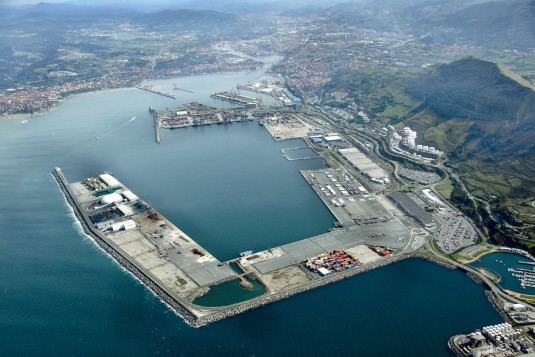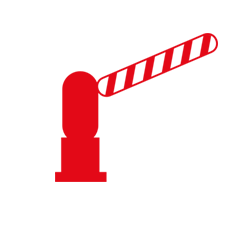• It will occupy an area of 334,000 m2 and price of invitation to tender is 125.03 million euros
• It will be 80% financed by the Port Authority’s own resources with the European Commission, considering it to be a strategic Project, contributing 20%.
• Demand for land and the present occupancy rate of almost 80% makes it advisable to create surfaces to accept new business opportunities.
• The tender includes the project to stabilise Punta Lucero Quarry, whose excess material will be used, as both works coincide in time.
The Port Authority of Bilbao has put out to tender the first phase of the construction works for the new dock in the Outer Abra at a cost of 125.03 million euros (not including Value-Added Tax). The European Commission has granted aid of 23.24 million euros as part of the Connecting Europe Facility Programme (CEF) under the proposal “Future Proofing Bilbao – Core Port of The Atlantic Corridor” as it is considered to be a strategic project.
In the first phase, which is scheduled for completion in 2019, 334,000 m2 of surfaces and 1,081 metres of berthing will be reclaimed from the sea together with a 21-metre draft. The land obtained will constitute somewhat more than half of the 600,000 m2 dock area once concluded.
The new esplanade, known as the Central Pier due to its location (in the area sheltered by the Zierbena breakwater and its secondary breakwater), means that full benefit will be taken of the same, and it will enable the land demand for the setting up of new private projects and new traffic to be satisfied.
A strategic work
Bilbao is one of the main ports in the Atlantic Corridor with an almost 80% occupancy rate. Expected increases in traffic for future years and the continuous demand for Port lands indicate that for 2020 the Port of Bilbao can reach its maximum capacity. Therefore, if works for the creation of new spaces are not commenced this year, a loss of opportunities would be produced and those companies needing to set up in large port surfaces to reduce logistics costs or because their production cannot be transported by road, would migrate.
Besides, the EU forecasts that maritime congestion will be a serious problem for all ports in Europe by 2030, including those in the Atlantic Corridor, due to the growing traffic trend: this, in turn, will increase not only vessel-response time resulting from size and the amount of cargo to be loaded and unloaded, but also waiting time to enter port. Thus, the EU subsidy will form part of a global project whose aim is to increase the Port’s capacity. Likewise, once the global project has been completed, congestion within the Port area will be reduced by 20%, which will make a positive contribution to the reduction in greenhouse effect gas emissions.
This action will also contribute to increasing competitiveness, promoting the economic development of the region and using means of transport with lower environmental impact. In

particular, the Port Authority expects the new spaces to be used for mixed installations and new traffic.
Stabilisation of Punta Lucero Quarry
The putting out to tender of the Central Pier, and its later awarding, will include stabilising the old Punta Lucero Quarry, for although both works are independent, and are being carried out for different purposes, they coincide in time and if their executions are kept step in step, the excess material from the quarry can be profitably used for filling in the dock.
The Port Authority of Bilbao has been examining different options to guarantee the safety of this old quarry, the safety of the companies in the area and the durability of this work for some time now. The quarry is located in Zierbena and was exploited in order to supply material for the Extension of the Port of Bilbao from the 1970s until some 15 years ago. Its greater part looks stable, except for a very specific area owing to the placing and sloping of rock slabs and the usual deterioration caused by the effects of rain and temperature.
Landslides in this zone have brought about the closure of the road that passes below for safety reasons. In addition, concrete blocks have been laid out to prevent rocks rolling from down its side to the nearby petrochemical deposits. These measures are provisional and make it necessary to undertake actions offering a permanent solution for the surroundings by providing them with the necessary safety for the adequate development of port activities, both in lorry transit, and in liquid bulks storage.
Taking into consideration the facts, it was decided to carry out a previous study of the zone, and a later development of the same in order to establish the alternatives that would stabilise the side. The alternatives of supporting the side using anchors and safety netting were rejected due to their mid- and long-term performance, so it was decided to undertake stabilisation by regulating the side by providing slopes and berms in order to guarantee long-term safety and durability. Regulating will produce an excess of material that has to be withdrawn and deposited elsewhere. Consequently, the Port Authority will take advantage of this excess and use it as filling for the Central Pier, thus compensating both works.
Therefore, although the stabilisation of Punta Lucero is independent of the Central Pier works, it will form part of one public tender only to coordinate both works by optimising the rhythms of both.

 Port access
Port access